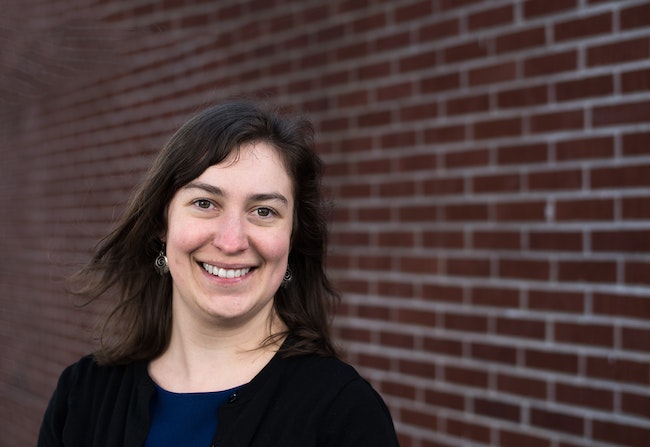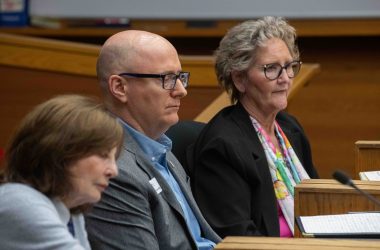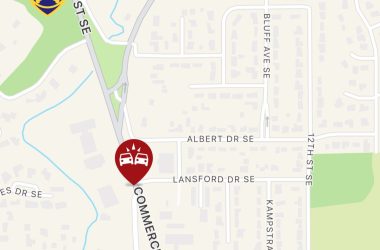 Rachel Alexander, reporter (Fred Joe/Special to Salem Reporter)
Rachel Alexander, reporter (Fred Joe/Special to Salem Reporter)
As a journalist working overtime to keep Salemites informed about the novel coronavirus, I know our role as a watchdog on government and gatherer of accurate information is most vital in times of crisis and fear.
Disease outbreaks are prime territory for panic, and with that, conspiracy theories, rumors and mistrust.
This week, I’ve already reported on the damaging effect unfounded rumors of COVID-19 cases among local students are having on our local schools.
But my ability and the ability of all journalists to keep the public informed about what’s happening and empower them to stay healthy without unnecessary fear, is being hampered by a culture of secrecy from state officials tasked with keeping the public safe. This means, for instance, we can’t inform you much about confirmed cases from Marion and Polk counties.
Oregon Health Authority officials have repeatedly refused to share even basic information with the public, frustrating government officials in counties and local school districts who face questions from local people, journalists trying to do our jobs, and most importantly, members of the public simply trying to stay healthy.
Agency leaders and their communications staffers have kept a tight lid on information about testing supplies and possible cases of the disease that don’t meet testing criteria. They have insisted that sharing routine information about specific cases of illness that other states are providing would violate patient privacy.
From the beginning of the outbreak in the Seattle area, local public health officials have shared details about individual cases that don’t name patients but do help contextualize what’s happening.
A March 1 news release from King County Public Health reporting two new and four existing cases listed a gender, age range and brief details about each patient’s condition: “A male in his 60s, hospitalized at Valley Medical Center in Renton. The man has underlying health conditions, and is in critical but stable condition.”
In Oregon, the state website took days to display age ranges, then hospitalization status on a state level. Those changes came only after repeated questioning from journalists and the public.
Thursday afternoon, a state news release about new confirmed cases specified for the first time that two were women over 55, and one was a man between 35 and 54 – a small step toward needed transparency that came only after repeated badgering from reporters and the public.
Marion County has so far reported two presumptive cases of COVID-19, and Polk County has reported one.
Wondering how old those patients are, how serious their illness is or whether they’re being treated in hospitals or staying home? Or even what part of the county they live in?
We are too. But county health departments won’t say – and they’re citing instructions from the state when they refuse. So far, all we know is one Marion County patient is hospitalized at Salem Hospital.
It’s always a challenge in health to balance the public’s right to know about potential risk and the privacy of individual patients. Oversharing damages trust and hampers the ability of health workers to investigate cases if people fear they may be identified through what they share in confidence.
State officials are publicly reporting counts of people who had close contact with another COVID-19 case and are being monitored for illness. Behind closed doors, they’re also tracking people who have crossed paths more casually with a confirmed case and now have symptoms of disease.
Oregonian reporter Brad Schmidt filed a public records request March 5 seeking the number of people being tracked.
Officials wouldn’t disclose that, digging out a state law that gives confidentiality for “information obtained by the Oregon Health Authority or a local public health administrator in the course of an investigation of a reportable disease or disease outbreak.”
But that same law advises, “Nothing in this section prevents the authority or a local public health administrator from publishing statistical compilations and reports relating to reportable disease investigations if the compilations and reports do not identify individual cases or sources of information.”
My inbox, and Salem Reporter’s Facebook page, are full of citizens with questions about the outbreak who are asking the same questions we’re asking health officials.
Some have said they’re not convinced the state would publicly share if an illness were reported at a local school or nursing home, putting others at risk. That hasn’t been the case as far as I can tell, but it illustrates the way restricting information gives way to greater fear and mistrust.
I’m hopeful continued pressure from journalists and the public will lead state officials to reconsider their approach. Until then, I’ll keep asking the questions and telling you when we can’t get answers.
Contact reporter Rachel Alexander at [email protected] or 503-575-1241.

Rachel Alexander is Salem Reporter’s managing editor. She joined Salem Reporter when it was founded in 2018 and covers city news, education, nonprofits and a little bit of everything else. She’s been a journalist in Oregon and Washington for a decade. Outside of work, she’s a skater and board member with Salem’s Cherry City Roller Derby and can often be found with her nose buried in a book.









